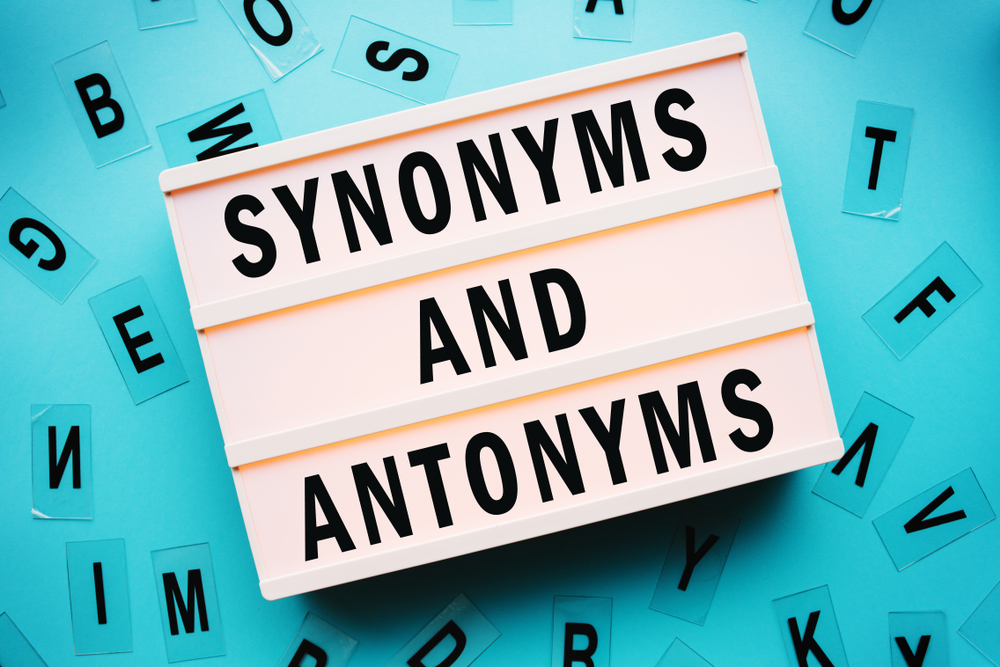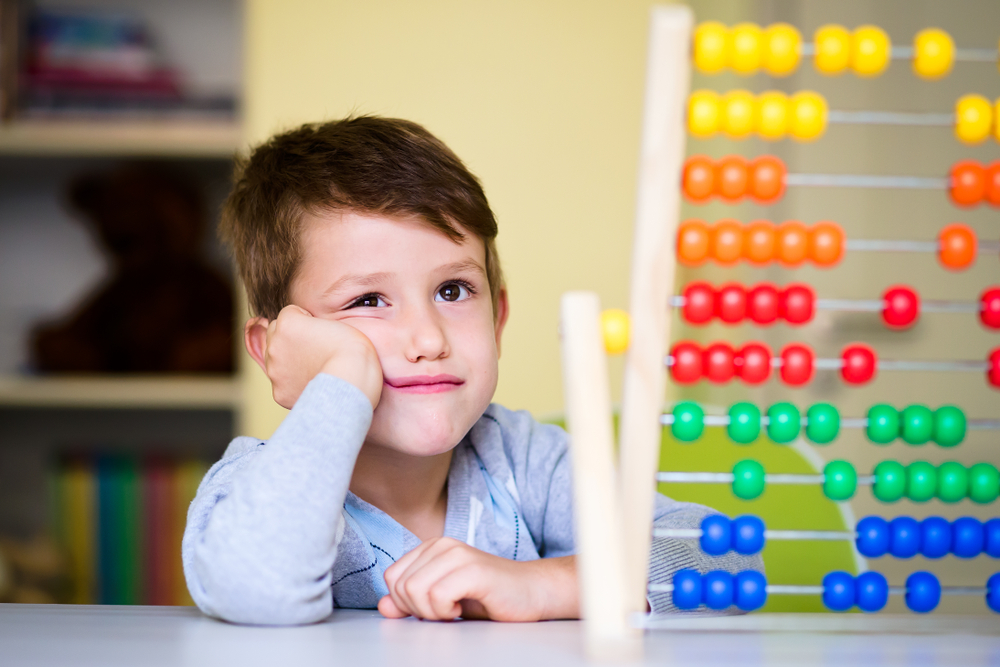Tracing Words worksheets activities for Ages 4-6
42 filtered results
-
From - To
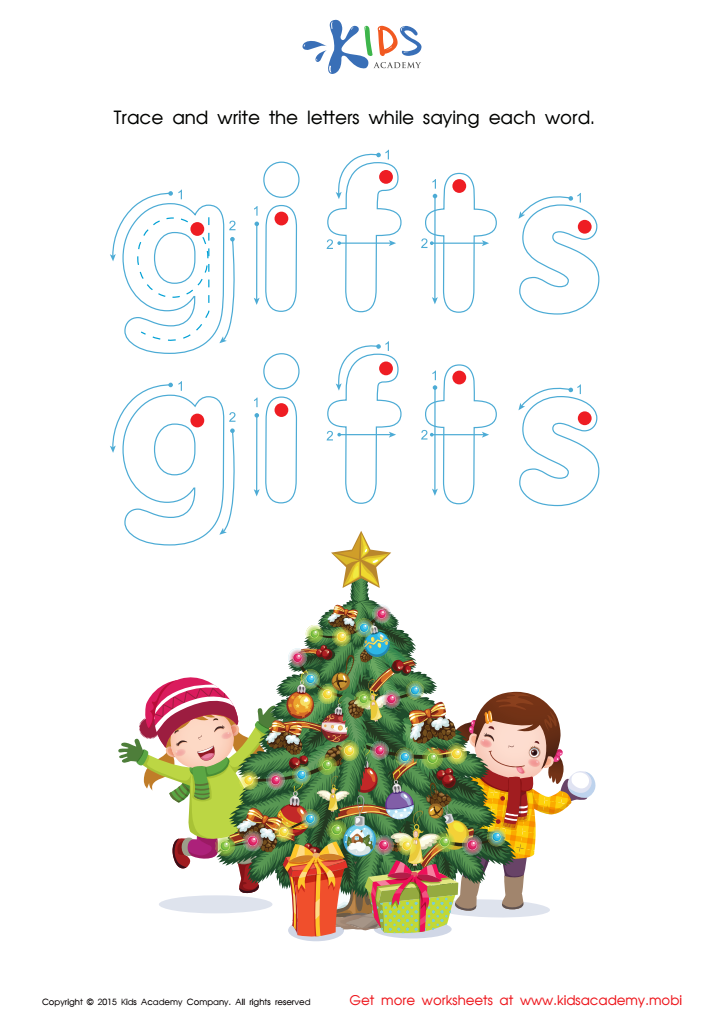

Christmas Tree Tracing Winter Words Worksheet
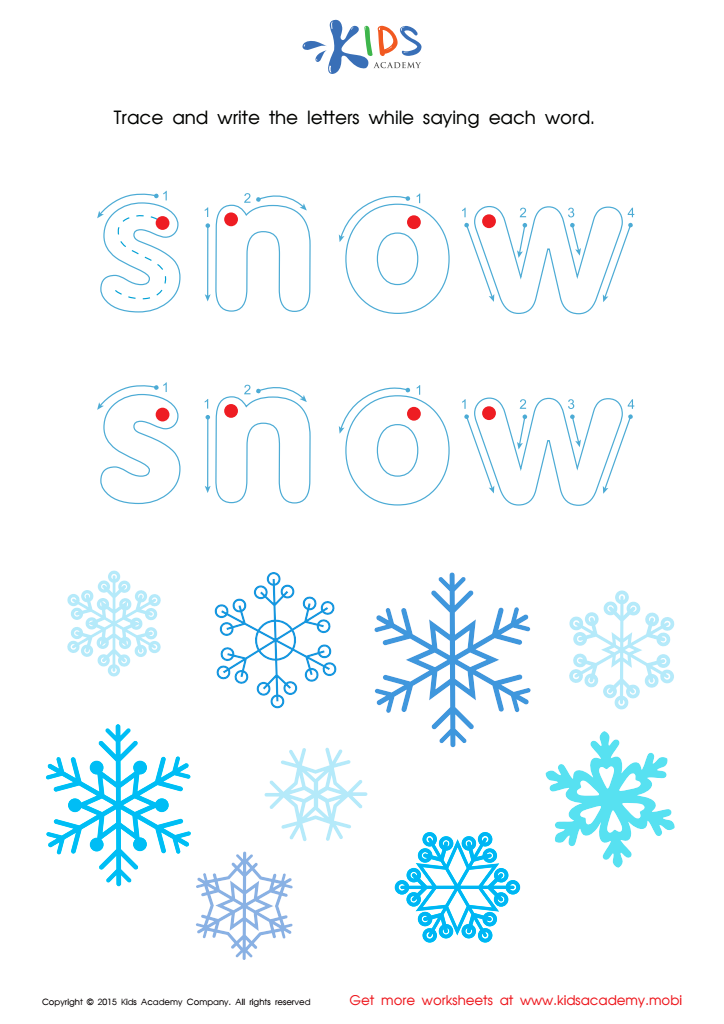

Snowflake Tracing Winter Words Worksheet
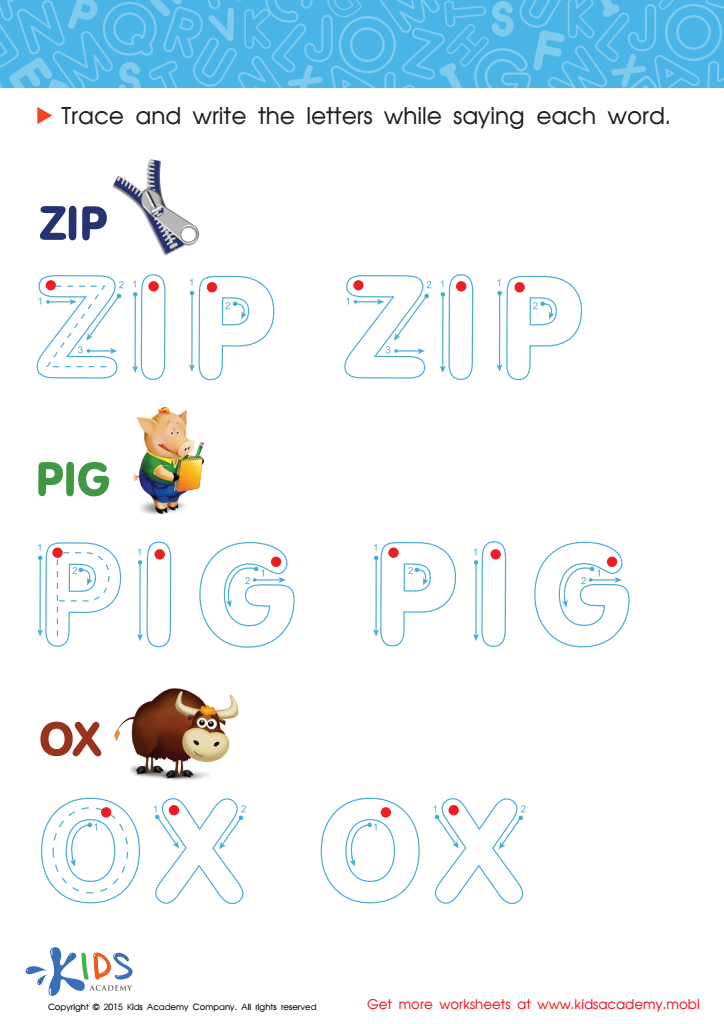

A Zip, a Pig and an Ox Spelling Worksheet
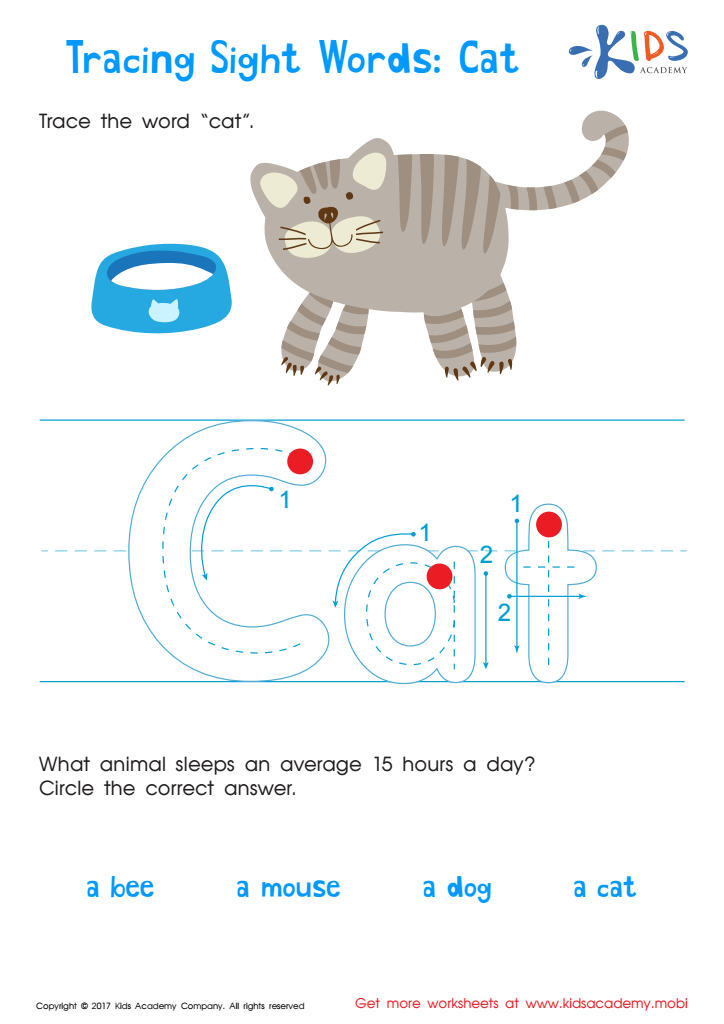

Cat Printable Sight Words Worksheet


Cupid Maze: An Printable
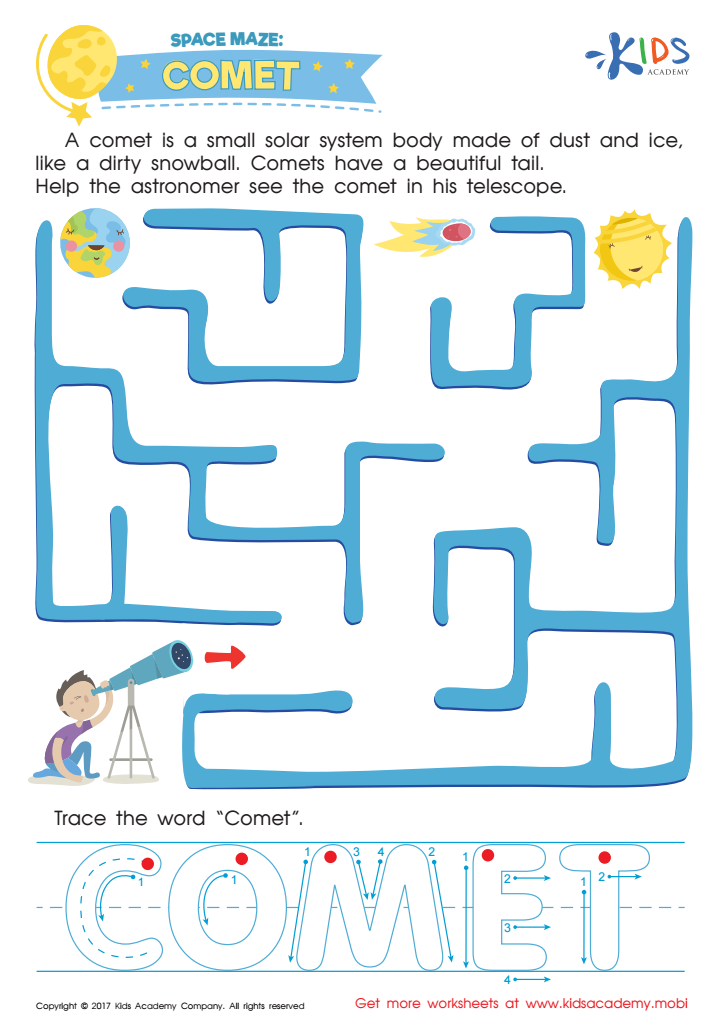

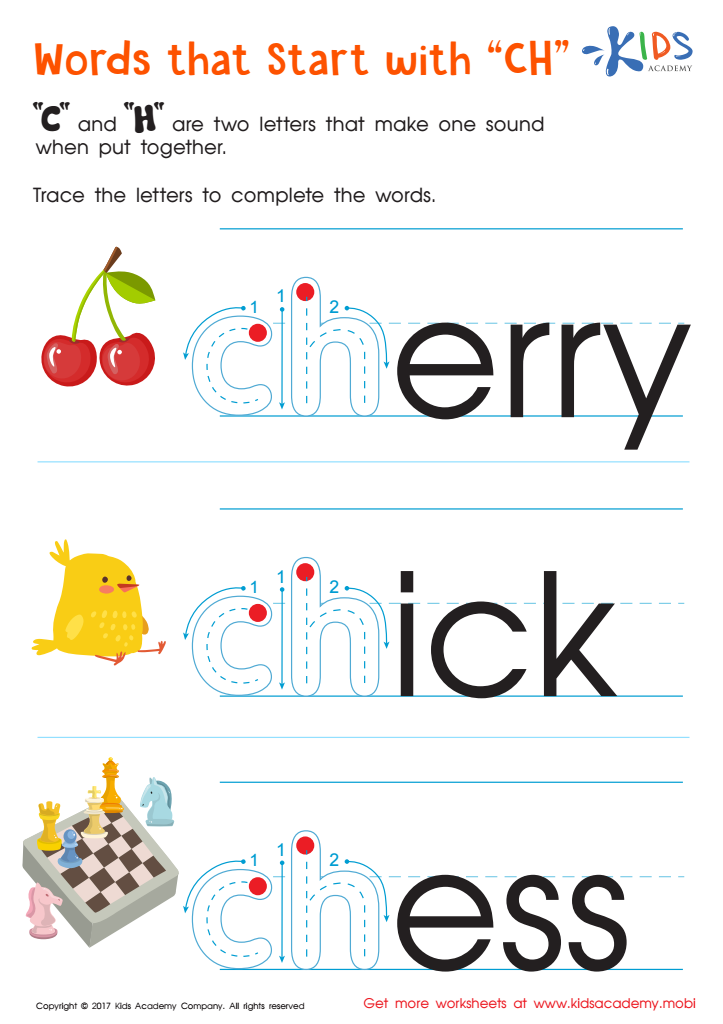

Words That Start with "ch" Spelling Worksheet
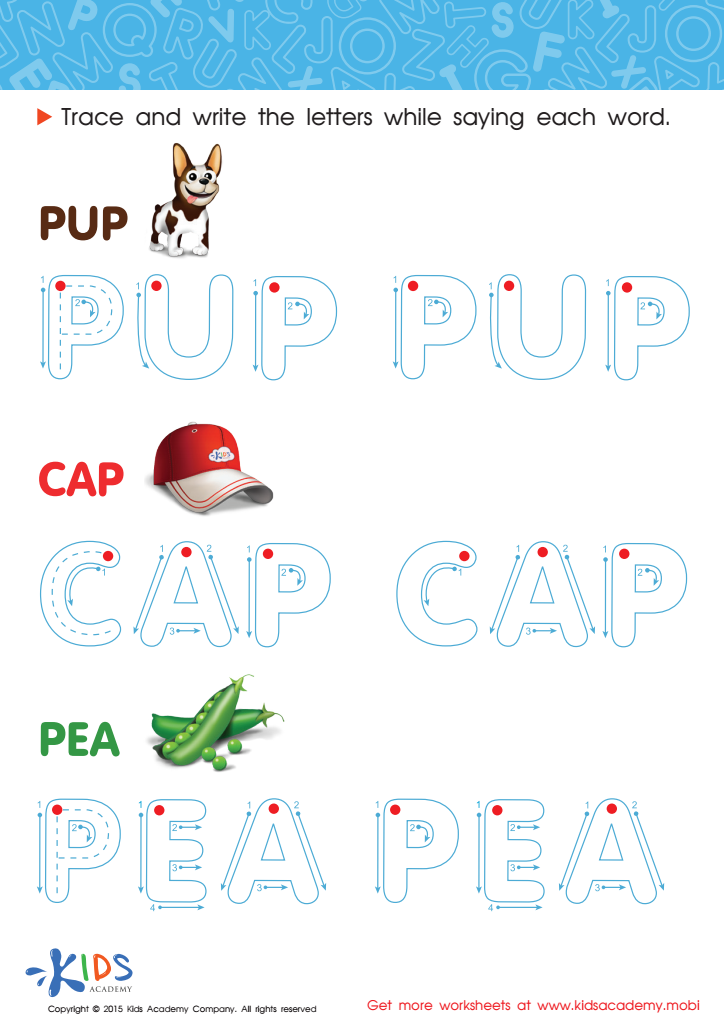

A Pup, a Cap and a Pea Spelling Worksheet
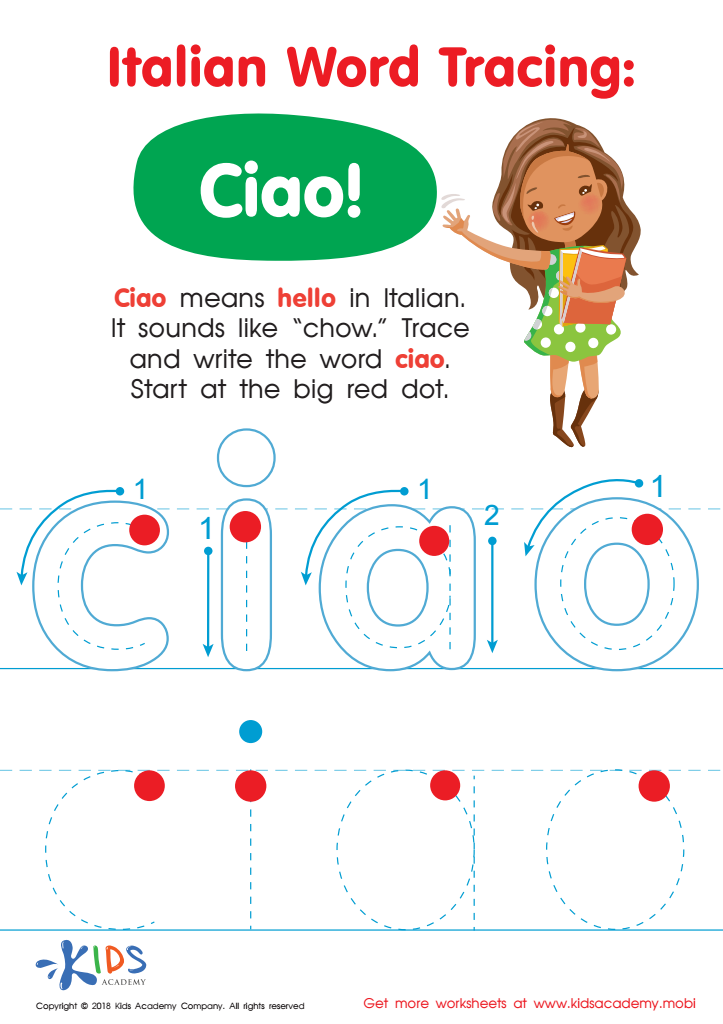

Italian Word Tracing: Ciao Worksheet
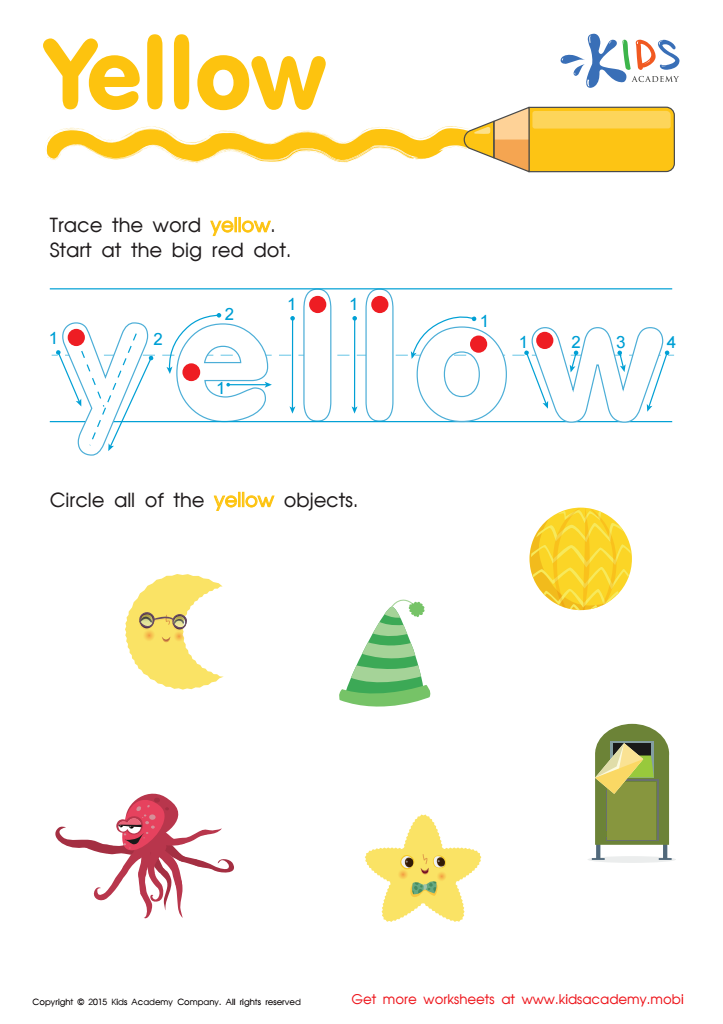

Yellow Tracing Color Words Worksheet
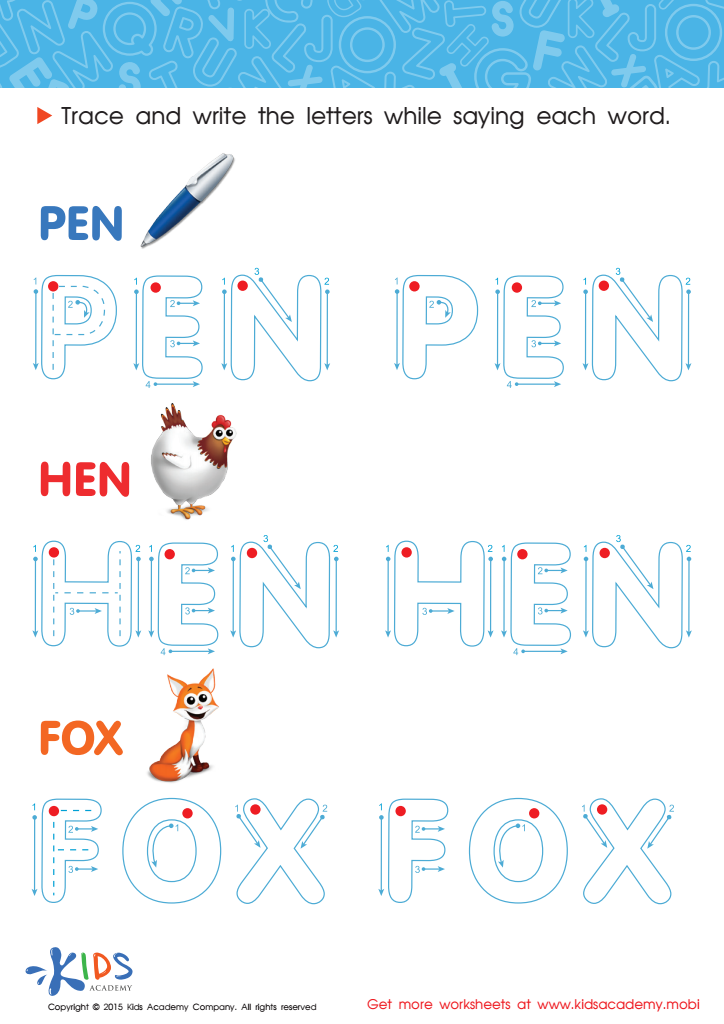

A Pen, a Hen and a Fox Spelling Worksheet
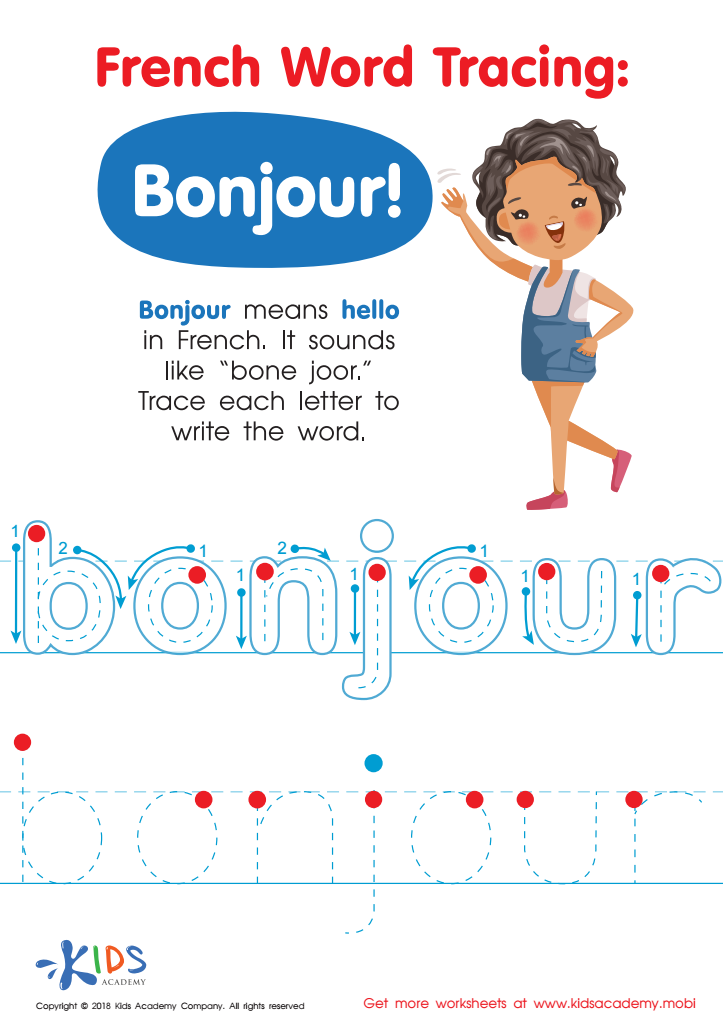

French Word Tracing: Bonjour Worksheet


Snowman Tracing Winter Words Worksheet


Dog Worksheet Sight Words Worksheet
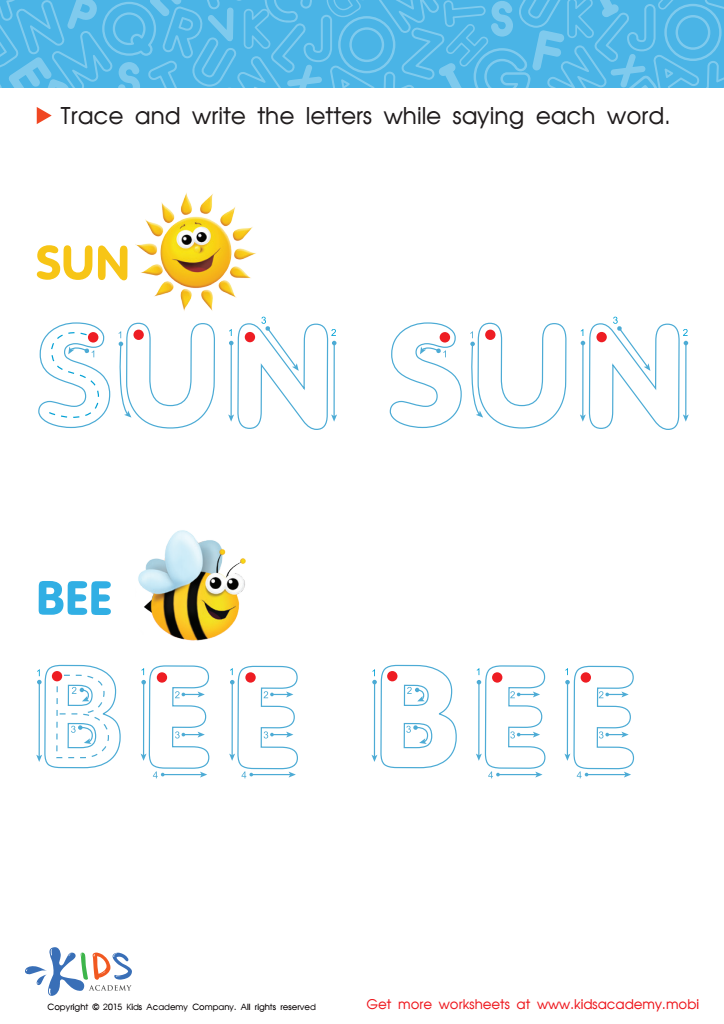

The Sun and a Bee Spelling Worksheet
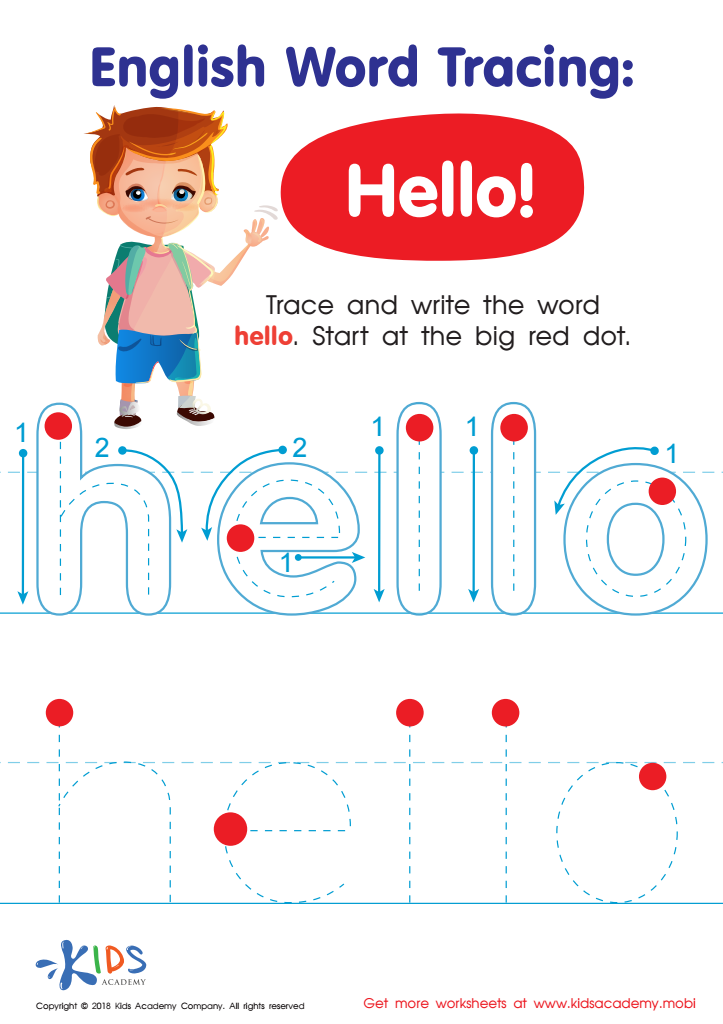

English Word Tracing: Hello Worksheet


Pink Tracing Color Words Worksheet


Red Tracing Color Words Printable
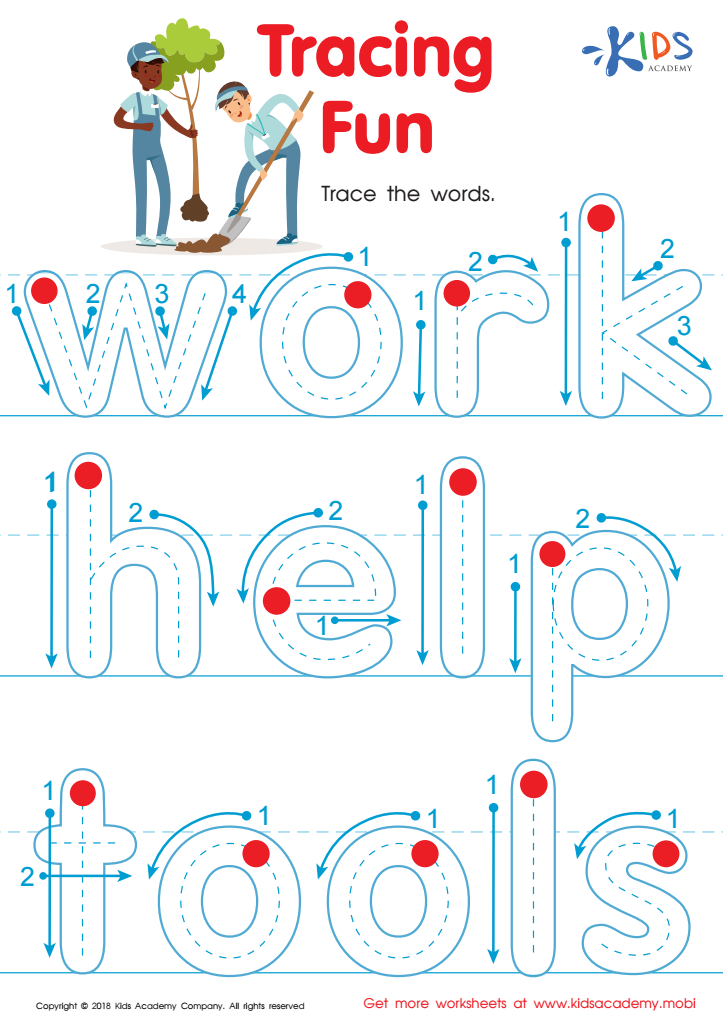

Tracing Fun Worksheet


Spanish Word Tracing: Hola Worksheet
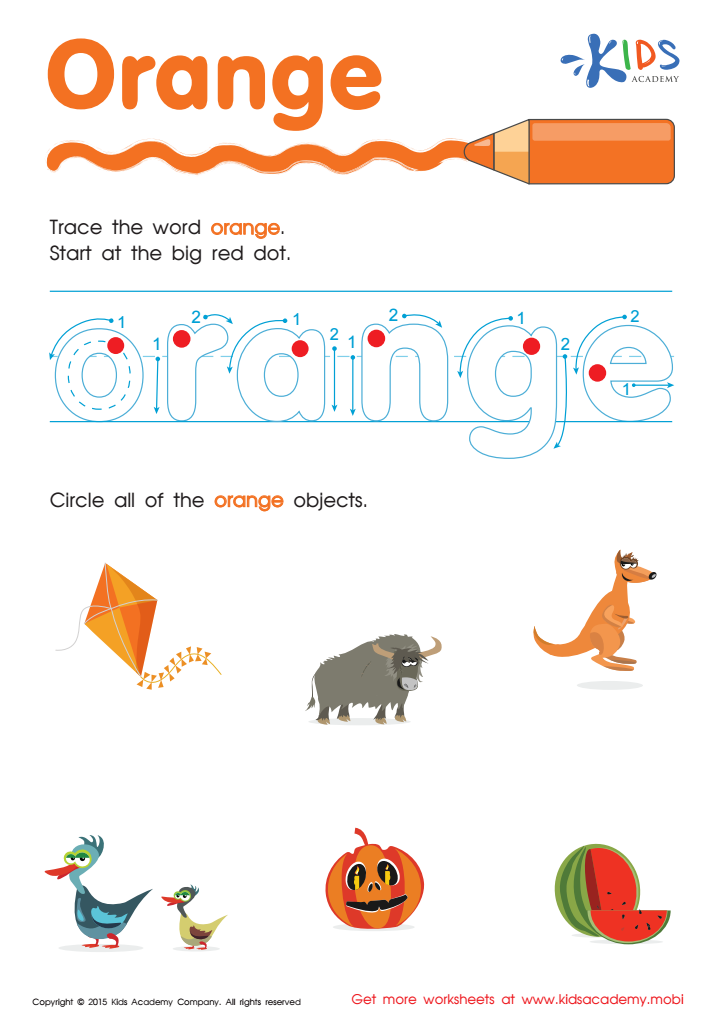

Orange Tracing Color Words Worksheet
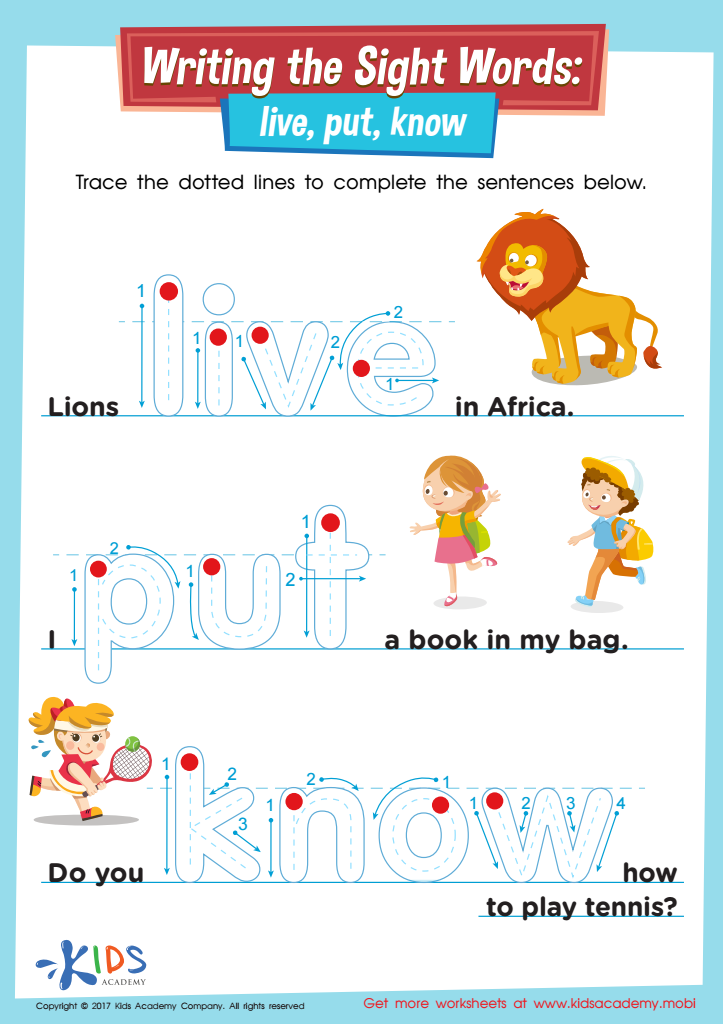

Live, Put, Know Printable Sight Words Worksheet
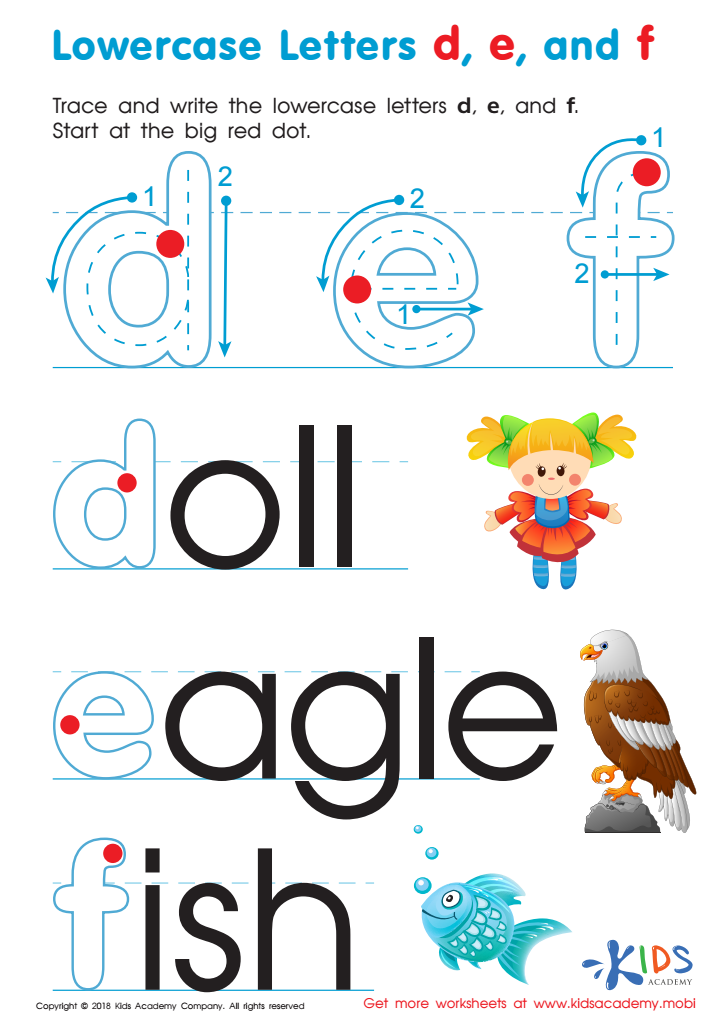

Lowercase Letters d e f Worksheet
Tracing Words worksheets activities stand out as an exceptionally beneficial tool in the realm of early education and literacy development. These engaging and interactive exercises are pivotal in fostering a solid foundation for reading and writing skills among young learners. By incorporating Tracing Words worksheets activities into the educational curriculum, educators and parents can significantly enhance children's ability to recognize and form letters, paving the way for proficient reading and writing capabilities.
The significance of Tracing Words worksheets activities lies in their ability to blend learning with fun, making the educational process enjoyable for children. This method promotes active participation and maintains the learners' interest, thereby facilitating better retention of the concepts being taught. Tracing Words allows children to practice fine motor skills, an essential aspect of writing, by guiding their hands in the formation of letters and words. This hands-on approach not only improves hand-eye coordination but also prepares young learners for more complex writing tasks.
Furthermore, Tracing Words worksheets activities contribute to the development of cognitive skills such as memory and concentration. As children focus on tracing each letter and word, they become more familiar with their shapes and sounds, reinforcing their phonetic knowledge and vocabulary. This repetitive practice aids in embedding these fundamental concepts in their memory, making future learning endeavors smoother and more intuitive.
Additionally, Tracing Words worksheets activities offer the flexibility to cater to individual learning paces. Children can progress through the activities at their own speed, ensuring that they fully grasp each concept before moving on. This personalized learning approach boosts confidence and fosters a positive attitude towards learning.
In conclusion, Tracing Words worksheets activities are invaluable in the early stages of education. They not only promote literacy and fine motor skills but also support cognitive development, personalized learning, and foster a positive learning environment. By integrating these activities into the learning curriculum, educators and parents can significantly contribute to children's overall academic success and enthusiasm for learning.
 Assign to My Students
Assign to My Students









